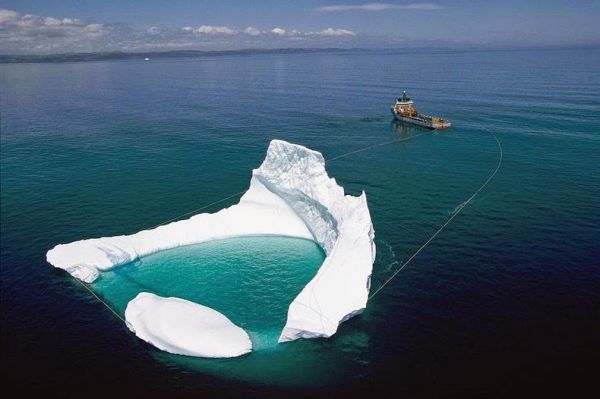
An industry was born out of the R.M.S. Titanic's collision with a 500,000-ton iceberg, which famously ripped the holes in the hull of the ship that were her downfall. After the Titanic tragedy in 1912, a group of North American and European nations established the International Ice Patrol (IIP) to prevent such incidents. The IIP utilizes data collected from satellites, radar and airplanes to furnish critical information to the maritime community regarding the location of icebergs and safe detours clear of them.
IIP information is vital to an industry of ice management contractors who are hired by oil companies to keep watch over their oil rig platforms. An estimated 20,000 to 40,000 icebergs a year — massive portions of Greenland glaciers — ride with the current into the North Atlantic, where they become potential dangers to oil installations off Newfoundland's coast. The ice management contractors keep a close eye on bergs in the general vicinity of oil rig structures. When an iceberg is identified as an immediate threat, it is then towed out of the area by the contractors, using specialized anchor handling tug supply vessels.
These contractors use towropes eight inches in diameter and up to 1/4 mile long to tow the immense icebergs. The towrope is attached to a buoy and the tug vessel circles the iceberg, while care is taken to keep a distance of 650 feet or so from the berg. Once the roping is complete, the rope is then attached to a tow cable. Between 1/2 and 3/4 of a mile of space is kept between the vessel and the iceberg to avoid a catastrophe if the iceberg flips over during the operation. If an iceberg flips during towing, it can slice through the boat, as well as cause rough seas due to the waves generated after it falls. Towing an iceberg can take up to 72 hours, as the boat needs in the neighborhood of ten hours to reach a speed of just one nautical mile (6076 feet) per hour.
Learn more and see additional pictures at Amusing Planet.

No comments:
Post a Comment